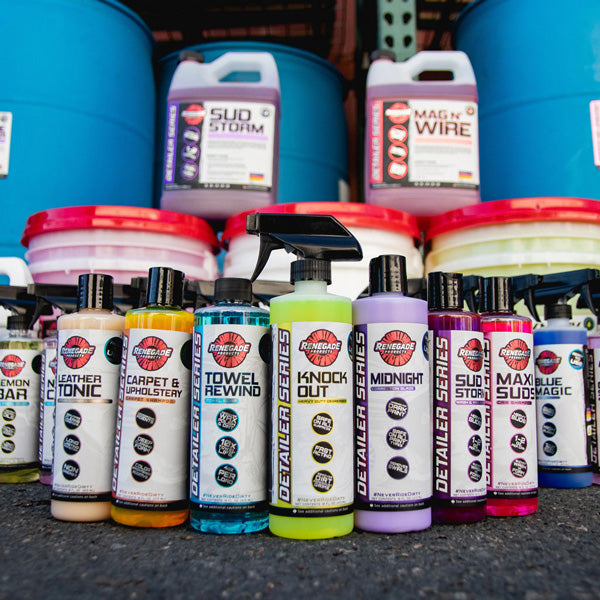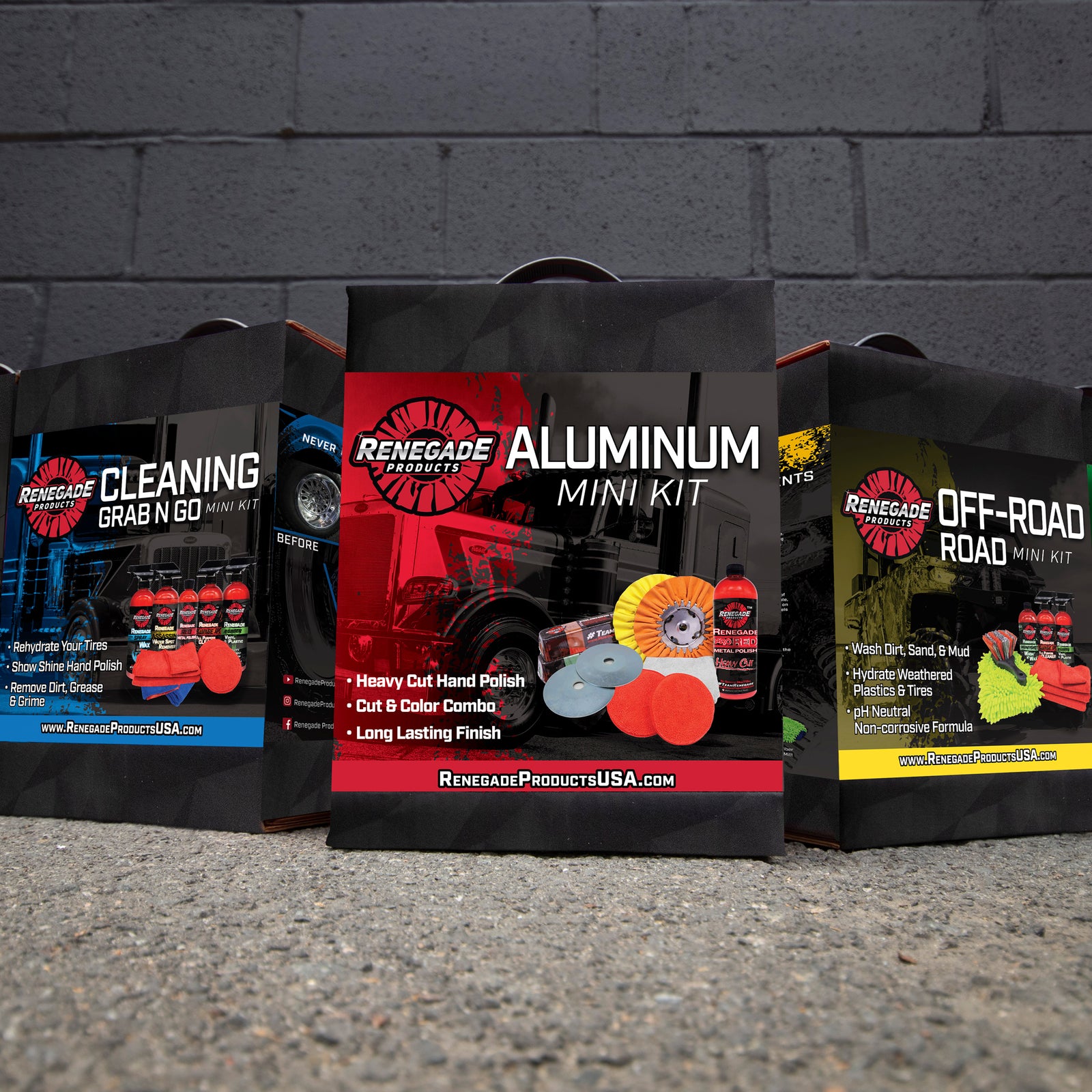An Introduction To Metal Polishing
Aluminum is a porous metal. The ease of polishing is nearly 100% related to this fact as we are actually cutting the top surface of the aluminum pores and smoothing the surface of what remains. What gives aluminum that shine and luster we all love is the reflection of light from the pores. When these pores are clogged or dirty, we get a dull and lackluster shine.
Because aluminum is so porous, it absorbs everything from industrial fallout, grime, brake dust and other contaminants which contribute to its erosion. Another drawback to the metal being so porous is that without regularly getting polished, aluminum has the tendency to dry out and whiten in color. It is important to remind customers that simple hand maintenance and/or a machine polish annually will generally be enough to protect the surface much longer.
There are 3 ways to polish aluminum:
1. Hand Polishing - In many cases where the surface of the aluminum is dull, but lacks significant oxidation, rust, pitting and burns, you can typically use a good hand polish in conjunction with a microfiber applicator for a quick shine that you can do from anywhere, whether it be on an alcoa wheel, billet wheel, tank or bumper. This method is great for smooth or rounded surfaces in a jam or for maintenance.
2. Dual Action Polisher - Using a dual-action polisher in conjunction with a microfiber pad or a foam pad and some liquid metal polish are great for smooth, flat surfaces for professional detailers or enthusiasts. Again - this method is great for surfaces that are not oxidized, rusted, pitted or burned. Metal polishing using a dual-action polisher is a great method that is quick & effective for those that have the proper equipment.
3. Rotary Polishing - Rotary polishing is the most effective way to turn a dull wheel, tank or bumper from dull to show shine. With this method you can use sanding wheels or polishing wheels to completely restore faded, oxidized, rusted, pitted and burned aluminum or stainless back to a show shine! For beginners we highly recommend a Makita 7" Variable speed grinder with our industry leading airway buffing wheels.
WHAT DO YOU NEED TO START POLISHING ALUMINUM?
Safety Equipment:
1. Full Face Respirator - Dont skimp on these, you dont want metal dust and polishing products in your lungs! This is the best respirator for metal polishing.
2. Safety Flanges - While there are two types, exterior flanges and insertable flanges, if you are just starting out get yourself the cost effective exterior flanges. You CANNOT and should not polish without this!
3. Tape - Masking tape is an absolute necessity when high speed polishing. This protects YOU from damaging paint that exists around the areas where you are polishing.
Best Tools For Polishing Aluminum or Stainless Steel:
1. Rotary Polisher - The best buffer for metal polishing is the fixed speed Makita GA7021 if you can handle the power and are a somewhat experienced or professional metal polisher. For beginners we recommend starting with a variable speed 3,500 RPM grinder, our personal favorite being the Makita 9237C.
2. Random Orbital Sander - When pitting, oxidation and scratches exit on the aluminum or stainless steel, sanding is an absolute necessity and the Makita Random Orbital Sander is the choice of metal polishing professionals. This 5" orbital sander should be combined with our premium 5" hook & loop discs found here
3. Buffing Rake - Buffing rakes are used in metal polishing to rake out any clumped up polishing compound and metal particles that get stuck to the buffing wheel. This is a necessity!
4. Buffing wheels - We have designed and engineered an easy to follow process for polishing both aluminum and stainless steel.
- Aluminum - For aluminum we like to break down polishing products into three stages, two being essential and the third for those that love that extra shine. This includes the cut stage, color stage and show shine stage.
- Cut Stage - For the first step of your polish we recommend using our orange airway paired with a tripoli compound bar.
- Color Stage - For this step we recommend our yellow buffing wheel paired with our green rouge compound bar.
- Show Shine Stage - For this step we recommend our ultra soft flannel buffing wheelpaired with our competition purple ultra fine finishing compound bar.
- Stainless Steel - For stainless steel polishing we have two main stages for metal polishing. When polishing stainless steel, the name of the game is heat generation! Our buffing wheels and polishing compounds are designed to be more aggressive to properly heat and polish the surface. We have an easy two-step system for stainless polishing. Easy to use stainless polishing mini kit can be found here.
- Cut Stage - For the first step polishing stainless we recommend our red airway buffing wheel with our black magic polishing bar.
- Color stage - For the second and last step of polishing stainless steel we recommend our pink airway buffing wheel with our yellow deluxe compound bar.
Below is a table showing the maximum safe operating speed for each size of buffing wheel:

What sander is best for metal polishing?
We recommend two different sanders that you can use with your sanding process before going into your metal polishing with buffing wheels & buffing compound. One is corded and is great quality and the other is a cordless for those that have a little extra budget and want the added convenience. Both are fantastic quality and work with our sanding discs.
1. Corded Orbital sander - Makita Orbital sander $ 100 All of the pros use this
2. Cordless Orbital Sander - Cordless Hand Sander that works great! $ 120




